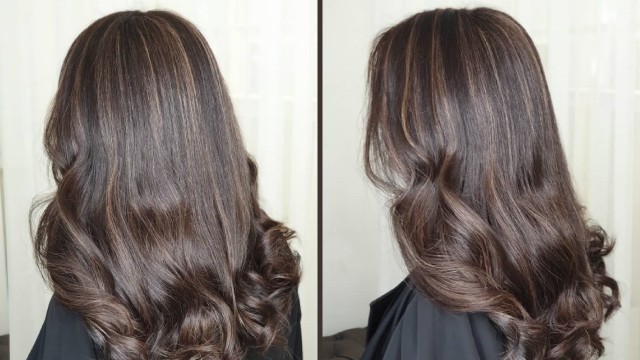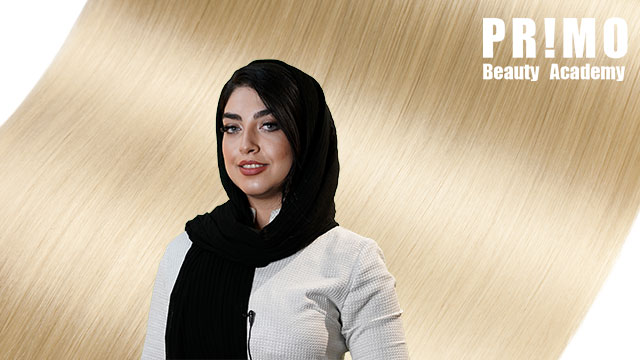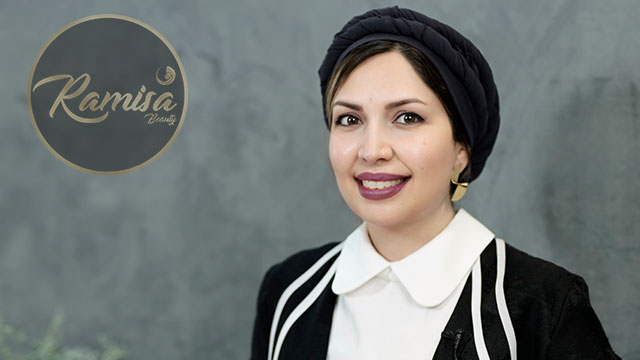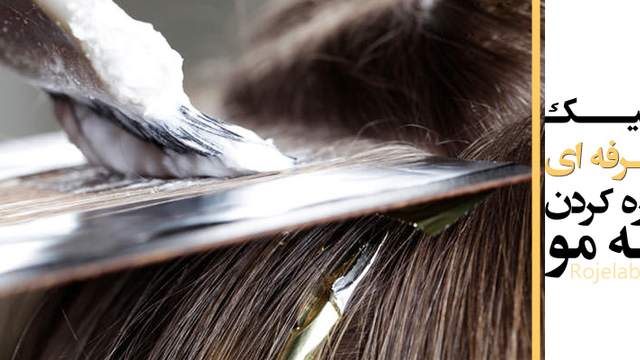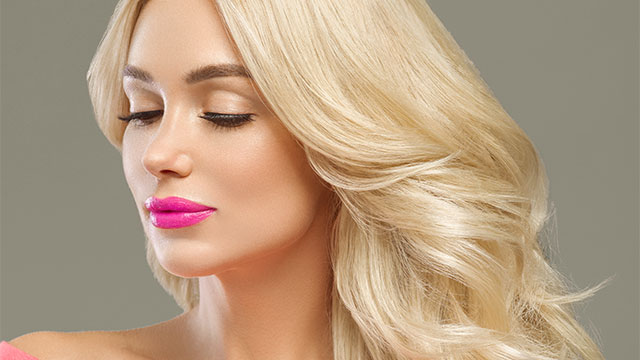How To: Hair Decoloring & Restoration
In this tutorial, you can learn how to perform a bleach restoration and recovery. You will also learn more about hair decoloring and decoloring powders and oxidants.
Instructions:
Greetings. I’m Anousha Shafi’e and today I want to talk to you about bleach recovery and restoration. I will also talk about signs and criteria of good decoloring powder, oxidant, and decoloring cream. This is very useful to people who have issues with bleach recovery and restoration.
The first thing you have to pay attention to when you want to work with formula is your and your client’s health. To clarify this point, I want to tell you about the criteria of a good decoloring powder. A good decoloring powder will not release dust when you pour it into a container from a thirty-centimeter distance. When it’s being mixed with an oxidant, there should be no bubble formation. This extra important during decoloring restoration, Ombre, and balayage. I’ve mixed my decoloring powder with the oxidant in my bowl. Here, I’m using Val var products.
It’s been five minutes since I’ve mixed my product but as you can see there’s absolutely no foam. You have to add sixty grams of oxidant for every thirty grams of your decoloring powder. When you don’t use accurate measures for your mix, you reduce the lightening power of the product. When you’re using this brand, make sure your oxidant is always twice the amount of your decoloring powder. My students often ask me whether the blue powder is more potent or white powder. To answer this question I should say that both of these powders are able to lighten hair to a level of 9, but when you reach a level 7 or 8 and you notice a yellow or orange background color in your bleached hair, it’s better to use the blue powder, because blue can easily neutralize orange and yellow.
Experience shows that the white powder works better at the beginning of the work and the blue powder is more effective on hair with a yellow or orange mix. This is because of the blue pigment in the blue powder. However, if for any reason you didn’t have access to the white powder, in the beginning, you can use the blue powder without a problem. I think it’s not out of order if we talked a little about Val var’s decoloring cream as well. Because of the softening material included in a decoloring cream, they are less likely to dry and damage your hair and you can still get your hair to a level 7 using them. You can use decoloring creams if you have a light hair, or you want to do highlight.
Val var also produces oxidants in three different percentages, which includes 6, 9, and 12 percent, in 3 different sizes. The smallest size is intended to be used at home. Keep in mind that using oxidant has a rule you have to follow. If you don’t have a scale, you can keep one of these bottles and use it as a measuring cup for your use. If you use a higher or lower dosage than what is necessary, your color will look lighter or darker. The green oxidant which is plant-based, and anti-red oxidant are more useful with blue powders and to remove yellow from hair.
Powders that create lots of foam or bubbles can cause trouble. Because after you add your oxidant to the mix, if there are bubbles, you’ll have to add another cup of powder which would make your mixture of oxidant and decoloring powder of equal values. This will reduce the lightening power of your formula. As you can see, the hair on the model is already decolored. However, we want to show you how to do decoloring restoration as.
If the roots have grown and we would like to bleach those parts. I strongly recommend using 6 percent oxidant formula to prevent burning the decolored hair.
The technique I’m going to show you will help you with decoloring and preventing damage to the hair. Traditionally, you hold the hair like this and add the decoloring material. Whether you like it or not, some of the formulae will get to where the hair is already decolored and would damage the hair. The technique I want to show you will greatly reduce this problem. Hold the hair, add some formula to the palette. Hold the hair upside down. Add the product to the hair one centimeter away from the root. You can use ointments like Vaseline on the decolored lines to prevent burn. Put your foam paper on the hair and return the hair to its normal state. Here the batch I chose is a little thick and the formula has not reached the other side of the hair. Keep in mind that the layers you choose should be very thin. The thinner the layers, the sooner you’ll be able to bleach the hair.
You might be asking why I didn’t put the product on all of this area. It’s because when the root has grown more than three or four centimeters, it’s better to add the product to the stem first, and when you reached a level five or six, come back and add the product to the roots. Because since the root is closer to the skin, it’s warmer and will reach the level of bleach sooner. As a reminder, you must only use oxidant level one for the roots. Put another layer of foam paper on the hair. Now you can move to the next layer. I have chosen this layer a little thinner. Hold the stem in your hand and start adding the product to the hair.
Using the foam paper will also help create a bit of heat and therefore your hair will reach the desired level of bleach faster. Put the foam on the foam and put the hair back down. You can put more product on the hair if you notice some places are left out. Do the same thing for the rest of the hair and wait until you reach the desired level of bleach. If you don’t want to reach a very high level, then add the product to the root as soon as you reach a level of 5 or 6. However, if you want to go higher, wait for the stem to reach at least a level 7. Next, pull flip the foam papers up and add the product to the roots. Do the same for the root on the top of the paper as well. Continue until the end. One of the advantages of using Meche or foam paper is that you can proceed like flipping pages and you also won’t need to wear gloves.
You need to check the hair based on its type and resistance. If you want to bleach the hair to a very high level, then you can recharge your material using nine percent anti-red oxidant and blue decoloring powder. Be very careful not to add this type of oxidant on already decolored hair to prevent burn and damage. When you reach the preferred decoloring level, rinse the hair and towel dry. Use a suitable dye, wait the allotted time, then rinse the hair and use a conditioner to close the cuticles. You should also use a suitable hair mask to prevent dryness.
To close the cuticles and returning the correct acidic conditions to the hair after applying the dye,
We should use a suitable conditioner. Apply the conditioner and massage the hair for a few minutes and then rinse. This will close the cuticles and prevent color loss. The valvar hair mask can be bought and used by the client, or you can apply it for them after the conditioner is applied and rinsed off. This hair mask contains emollient and can prevent dryness and fragility. It will also act as a moisturizer and will hydrate your hair. You can use a cap on your hair and heat the hair using a blow drier for five minutes after applying the hair mask. This will help increase the absorption process.
I hope the techniques I showed you today and the products I recommended are useful for you. Until next time, goodbye.

